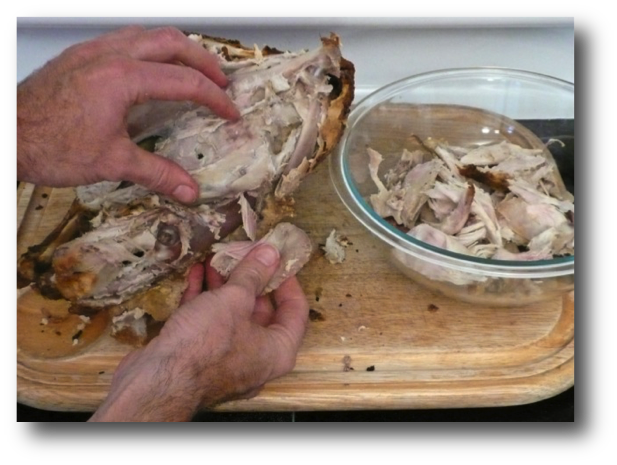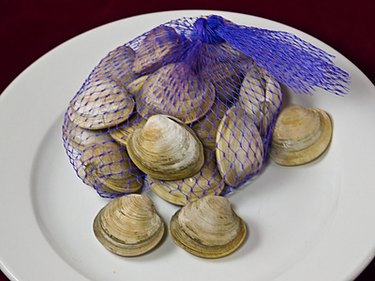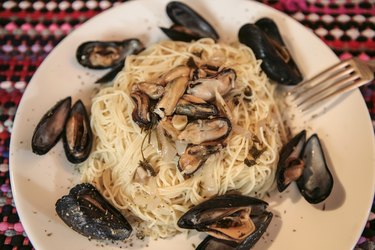Anyone who wants to prepare a good ol traditional turkey dinner at holiday time (or any other time, for that matter) has to deal with the stuff thats stuffed inside the bird – in other words, that package of turkey giblets and the turkey neck. The frugal cook doesnt throw out any of these tidbits, since you can use all of it.
The turkey neck is an underrated and often overlooked part of the bird that actually contains a good amount of tasty, tender meat. While whole turkeys usually come with the neck still attached, you’ll need to know how to properly remove the meat before cooking up this flavorful cut.
In this comprehensive guide, we’ll walk through the simple process of getting the most out of your turkey necks, from initial prep to cleaning the bones. Follow these steps and you’ll be ready to enjoy this delicious meat in all kinds of recipes.
Before jumping in, let’s cover some turkey neck basics
-
The neck is the long, tube-shaped portion connecting the turkey’s body to its head.
-
It contains a good ratio of bone to meat – usually about half and half.
-
The meat consists of small, individual muscles that are naturally tender when cooked
-
When simmered, turkey necks add rich flavor to broths and soups.
-
The meat easily separates from the bone when fully cooked and makes a tasty addition to beans, greens, grains and more.
So while they might not look like much raw, turkey necks offer a lot of flavor and nutrition. Now let’s go over the process of extracting that meat.
Step 1: Remove the Neck
If you bought a whole turkey, the neck is likely tucked inside the main cavity. Check both the neck and tail openings.
Use sharp kitchen shears to carefully cut through the skin and tissue at the base of the neck to remove it.
Rinse under cool water and pat dry with paper towels before continuing.
Step 2: Segment the Neck
Depending on the size, the neck may need to be cut into smaller sections to fit your pot or pan.
Use a sharp knife or kitchen shears to slice the neck crosswise into 2-3 segments. Cut between vertebrae.
Trim away any excess skin or fat if needed. Rinse again.
Step 3: Season and Brown the Meat
Season the neck pieces lightly with salt and pepper.
In a skillet, heat 1-2 Tbsp oil over medium-high heat.
Sear the neck pieces until nicely browned on all sides, about 2 minutes per side.
This step adds flavor and helps render some fat.
Step 4: Braise the Neck
Place the seared necks in a soup pot or dutch oven. Add enough liquid to mostly submerge.
Water works, but for richer flavor use chicken or turkey broth.
Add aromatics: onions, carrots, celery, garlic, bay leaves, etc.
Simmer gently until fork tender, about 1-2 hours. The meat should start separating from the bones.
Step 5: Remove the Meat from the Bones
Once fully cooked, transfer the necks to a plate or cutting board to rest until cool enough to handle.
Using your hands or a fork, start pulling and lifting the meat away from the bones. It should come off fairly easily.
Discard the bones and skin. Shred or chop the meat if desired.
Step 6: Use the Meat as Desired
The pulled neck meat can now be used in any recipe calling for cooked turkey or chicken. Some ideas:
-
Add to soups, stews, chili or casseroles
-
Mix into bean or grain dishes like turkey and rice
-
Stuff into sandwiches, tacos or empanadas
-
Sauté with vegetables and eggs for breakfast hash
-
Fold into pasta, salads or stir fries
Get creative with this flavorful meat – the options are truly endless!
Tips for Getting the Most from Turkey Necks
-
Use necks within 2 days for optimal freshness. Keep refrigerated.
-
Save the cooking liquid for an ultra-rich and savory turkey broth.
-
Add vegetables, herbs and spices to infuse the meat with more flavor.
-
Adjust cooking times as needed for larger/smaller necks.
-
Let cool fully before handling to avoid burning fingers.
-
Refrigerate or freeze the pulled meat in portions for easy use later.
Now that you’re a pro at removing turkey neck meat, you can start enjoying this underutilized cut. With its supreme tenderness and juicy texture when cooked right, turkey neck is too tasty to toss in the trash!

First, Thaw the Turkey
Video of the Day
The turkey giblets and the neck can be found in the turkeys neck cavity (to the front) or body cavity (to the back) of just about any whole bird you see at the supermarket. Most of these are frozen, and you must thoroughly thaw a frozen turkey before attempting to remove the inner bits. If you try to take them out too soon, the turkey will still be frozen inside, and these parts will get stuck. The plastic or paper package theyre packaged in might tear, shred or stick – and, in general, become a mess to deal with.



There are a few different ways to thaw a frozen turkey. Figure on approximately 24 hours in the fridge for every 4‒5 pounds, or 30 minutes per pound in cold water. The cold water method – usually done in the sink – is quicker than thawing your turkey in the fridge, but its also more of a chore, since you have to change the water about every 30 minutes. Salmonella contamination is, unfortunately, a possibility that you have to take into account while the turkey thaws, so be careful with it. Just be sure that its kept separate from other food and food-preparation areas.
Removing the Turkey Neck
Of all the parts of a turkey, the neck is probably the ugliest. It strains credulity to think that it might even be worth saving. That is, after you get it out of the bird to begin with. How is that accomplished?
When your turkey is all thawed out, reach inside the turkey where the package of giblets and neck can be found. Check both cavities; you dont want to leave anything behind. When youve found the giblets and neck, gently work your hand around them and gradually pull them out. If the turkey has been properly thawed, this should be easy.



You can use the heart, liver and gizzard to make giblet gravy. Note that some folks dont use the liver for this purpose, believing that it adds an odd, bitter note to the gravy. Many people use the neck either as another part of the giblet gravy or as a base for broth, stock or soup.
The main difference between a stock and a broth is that stock needs bones, and broth, which is made with meat only, does not. Theyre both heated in water thats brought to a boil and then simmered. While a broth usually needs to simmer just an hour or so, a stock needs more time – up to four hours – to allow all the nutrition from the bone marrow to permeate the liquid and for the collagen to become gelatinous and thick. Thus, a stock has more body and richness than broth.
Note that you wont get much stock from one turkey neck. If you want to make the most of your bird, use the remains of the carcass along with the neck.
How to Remove a Turkey Neck & Giblets
FAQ
How to remove the giblets from a turkey?
What do you do with the neck and giblets of a turkey?
What can you do with turkey neck meat?
Turkey neck can be used as a shredded addition to beans, soups, and sauteed greens, or served on the bone, smothered in richly flavored sauce. But the culinary magic doesn’t end there: The simmering liquid used to cook the turkey neck meat becomes rich bone broth, brimming with nutrients.
